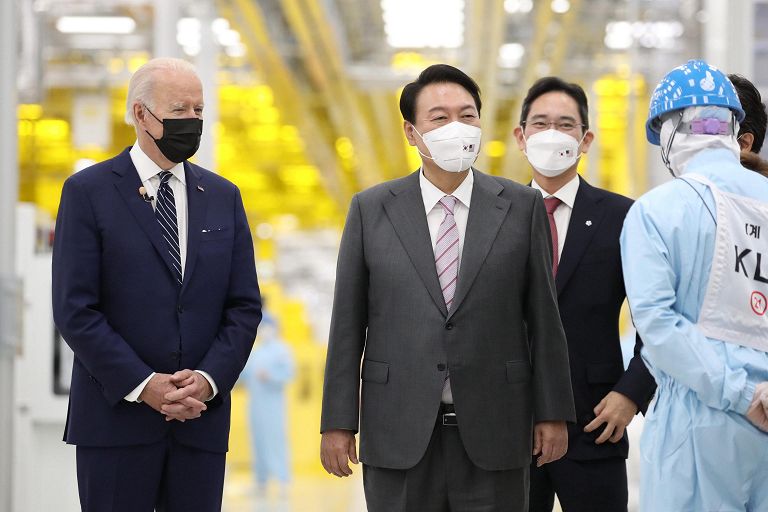South Korea will invest 300 billion won – about 210 million euros – to create the world's largest semiconductor manufacturing center on the outskirts of Seoul. It is a two-decade plan to increase the country's competitiveness in what is one of its leading sectors, according to the Ministry of Industry.
The plan calls for the construction of a new complex by 2042, which will have five advanced plants for the production of chips and which is expected to house about 150 design companies and materials and components.
The chosen municipality is Yongin (40 kilometers south of Seoul), where Samsung Electronics and SK Hynix, the world's first and second largest manufacturers of memory chips, already operate several semiconductor plants and several companies related to the sector are also established.
"The megacenter will house the entire semiconductor value chain," Industry Minister Won Hee-ryong said at the plan's unveiling ceremony in Seoul attended by South Korean President Yoon Suk-yeol.
The government is committed to approving a plan to invest about 3.2 trillion won (2.28 billion euros) in the development of next-generation semiconductor technologies for artificial intelligence and the power generation sector.
Handle
President Joe Biden with South Korean President Yoon Suk-yeol visits a semiconductor factory near Seoul
The news has raised some surprises. It is true that South Korea is the third largest exporter in the world of integrated circuits also called semiconductors or microchips - the market represents 16.8% of all the country's exports - but the latest data have certainly not been the best. According to the Ministry of Industry, microchip exports from South Korea were 44.5% lower in January this year than in January 2022. Not reassuring numbers even if the collapse in the sector confirms a general decrease trend in South Korean exports, which loses over 16% compared to last year.
Exports to China, which account for about 60% of all microchips exported by South Korea, are the main factors.
It is too early to assess how much the U.S. efforts to squeeze China's economic and technological growth will affect the market after Biden in October announced new restrictions on the sale of semiconductors to Beijing and intensified relations with Korea, where he also traveled to visit one of the country's most important microchip factories.
On October 10, the U.S. Bureau of Industry and Security (BIS) introduced strong export regulations and a wide range of controls, particularly on the range of products used in supercomputing systems that serve, including nuclear weapons and advanced military technologies.
In reality, the crisis in the sector, historically subject to cycles of growth and decrease, depends on consumer demand and appears more linked to the effects of the war in Ukraine, inflation and the pandemic. In particular, the latter, after an initial boom in the sale of electronic devices, has produced a stagnation of the market with a consequent drop in prices and accumulation of stocks in the warehouse.
Seoul's move
The construction of a new large semiconductor manufacturing hub is perfectly in line with future developments in the artificial intelligence sector. On this, the main competitor of South Korea is precisely the United States strong thanks to Nvidia, holder of the A100 patent for the most advanced artificial intelligence chips of the moment.
The South Korean government now wants to promote the domestic industry, investing more than $800 million over the next five years in research and development in an effort to increase the market share of Korean AI chips in home data centers from virtually zero to 80% by 2030.

